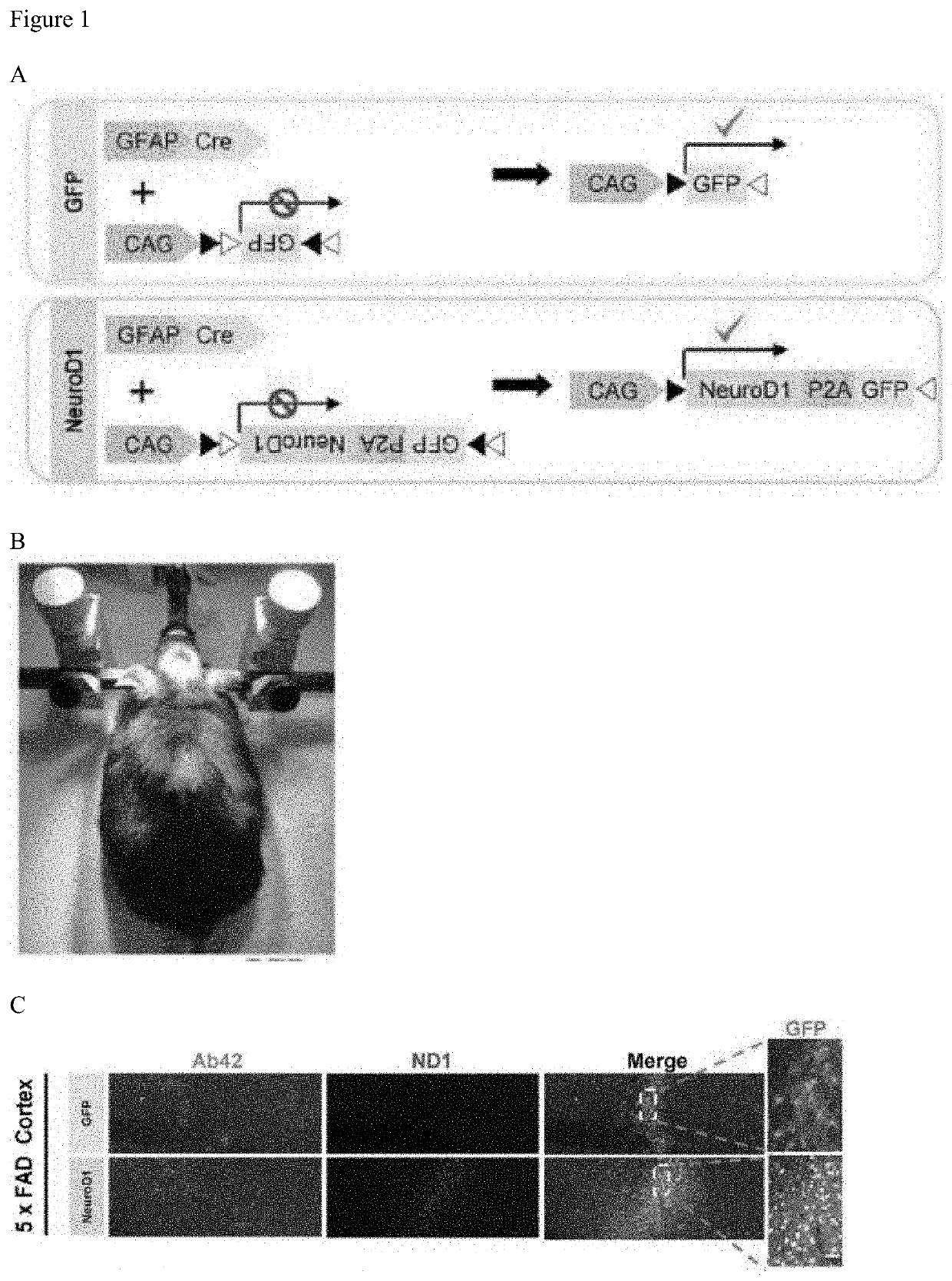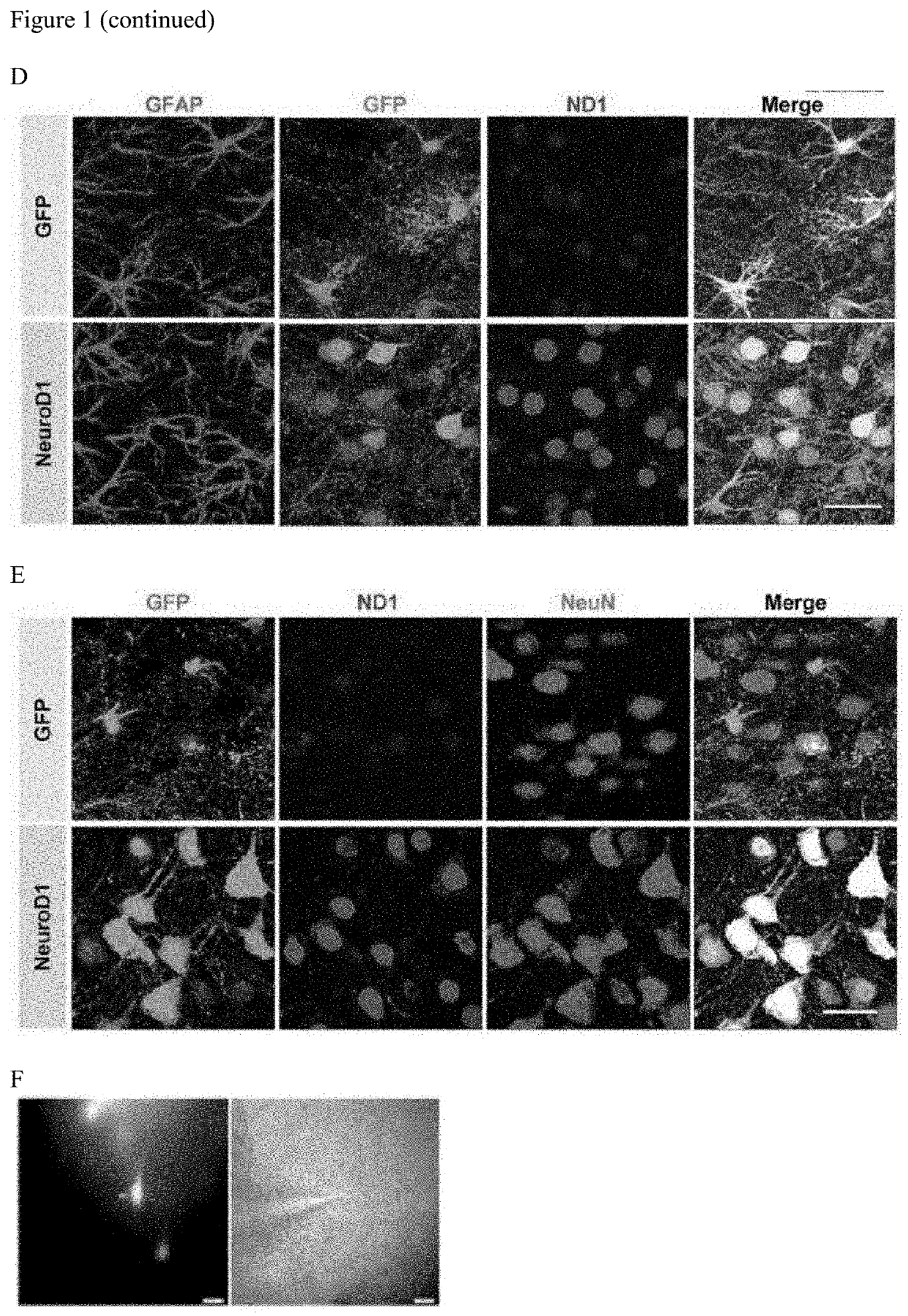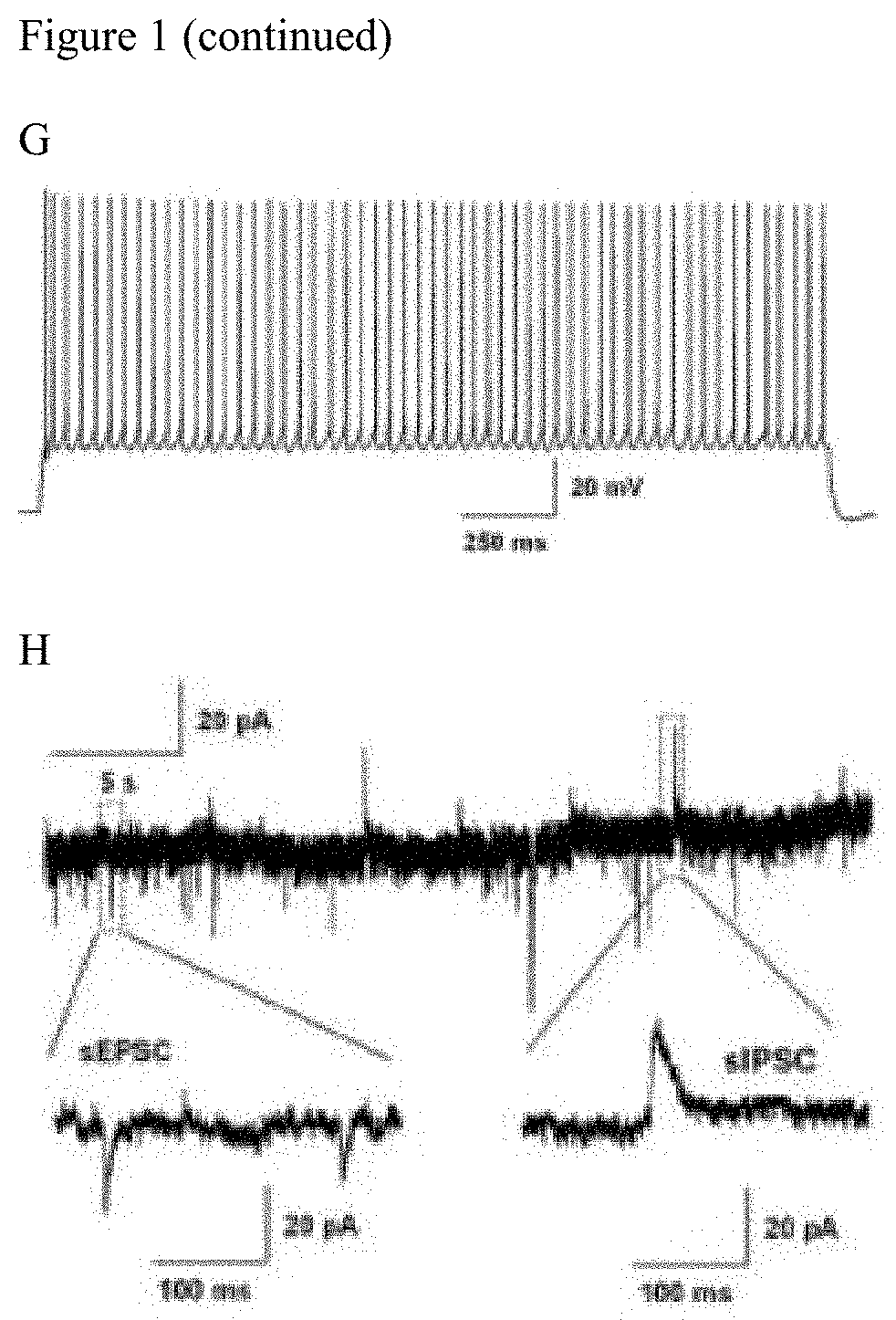Regenerating functional neurons for treatment of neurological disorders
a functional neuron and neurodegenerative technology, applied in the field of mammals' methods and materials, can solve the problems of no effective treatment approach for those suffering, and achieve the effects of reducing neurofibrillary tangles, reducing neuroinflammation, and reducing aggregation of extracellular amyloid plaques
- Summary
- Abstract
- Description
- Claims
- Application Information
AI Technical Summary
Benefits of technology
Problems solved by technology
Method used
Image
Examples
example 1
l Effects of NeuroD1-Mediated Astrocyte-to-Neuron Conversion in an Alzheimer's Disease Mouse Model
[0175]NeuroD1 Over-Expression in Reactive Glia Enables the Astrocyte-to-Neuron Conversion with High Efficiency in 5×FAD Mouse Brain
[0176]In the AD brain, typical hallmarks include gliosis, neuronal loss, amyloid plaques, and intracellular neurofibrillary tangles. Gliosis has been reported to be highly enhanced in human AD cortices (Castillo et al., Scientific Reports, 7:17762 (2017)) and AD transgenic mouse models such as 5×FAD mice and Tg2576 AD mice (Games et al., Nature, 373:523-527 (1995); Nussbaum et al., Nature, 485:651-655 (2012); and Oakley et al., J. Neurosci., 26:10129-10140 (2006)). Particularly, the amyloid deposition and gliosis in 5×FAD mouse brains begins at 2 months of age, and is largely accumulated at deeper cortical layers and subiculum regions. Additionally, the neuron number decreases with age in 5×FAD brain during the pathological progression (Oakley et al., J. Neu...
example 2
fection of AD Mouse Brain by Multiple Intracranial Injections of NeuroD1 AAV-PHP.eB
[0189]To globally target astrocytes for neuronal conversion in the mouse brain, the AAV-GFAP::Cre FLEX system (FIG. 12A and FIG. 12B) and multiple intracranial injections (FIG. 12 C and FIG. 12 D) were applied in our study. AAV-PHP.eB was selected to ectopically express NeuroD1 and GFP (control) in the mouse brain. We injected the FLEX GFP and NeuroD1 AAV-PHP.eB into the GFAP::Cre transgenic mouse brain. 15 days post injection (dpi), the mouse brain was sliced for histologic analysis. Immunohistochemical analyses of sagittal and coronal sections around the injected regions showed that GFP positive cells were detectable in a broad area both in GFP and NeuroD1-GFP injected mouse brain. These results indicate that multiple intracranial injections of AAV-PHP.eB achieve the broad infection through the mouse brain.
Global Astrocytes-to-Neurons Conversion in GFAP::Cre Transgenic Mouse Brain
[0190]To test wheth...
example 3
nversion of Astrocytes into Neurons Through Retro-Orbital Injection of NeuroD1 AAV
[0194]By using AAV.PHP.eB, a serotype of AAV that is recently discovered (Chan et al., Nat. Neurosci., 20(8):1172-1179 (2017)), we are able to efficiently transduce the mouse brain across the blood-brain-barrier (BBB) by intravenous injection. We firstly packaged AAV.PHP.eB with GFAP promoter-driven GFP plasmid. At 17 days after retro-orbital injection, the mouse brain was widely labeled by GFP fluorescence (FIG. 17A). Co-immunostaining with astrocytic marker, S100β, showed very specific expression of GFP in cortex, striatum, and hippocampus regions.
[0195]We next packaged the AAV.PHP.eB virus with Cre-FLEX system, trying to achieve higher expression of the interested genes. We firstly made AAV.PHP.eB with GFAP::Cre and FLEX-GFP virus. Retro-orbital injection of this combination also showed wide infection and strong expression in the brain (FIG. 18A). While many GFP positive cells in different brain reg...
PUM
| Property | Measurement | Unit |
|---|---|---|
| volume | aaaaa | aaaaa |
| volume | aaaaa | aaaaa |
| volume | aaaaa | aaaaa |
Abstract
Description
Claims
Application Information
 Login to View More
Login to View More - R&D
- Intellectual Property
- Life Sciences
- Materials
- Tech Scout
- Unparalleled Data Quality
- Higher Quality Content
- 60% Fewer Hallucinations
Browse by: Latest US Patents, China's latest patents, Technical Efficacy Thesaurus, Application Domain, Technology Topic, Popular Technical Reports.
© 2025 PatSnap. All rights reserved.Legal|Privacy policy|Modern Slavery Act Transparency Statement|Sitemap|About US| Contact US: help@patsnap.com



